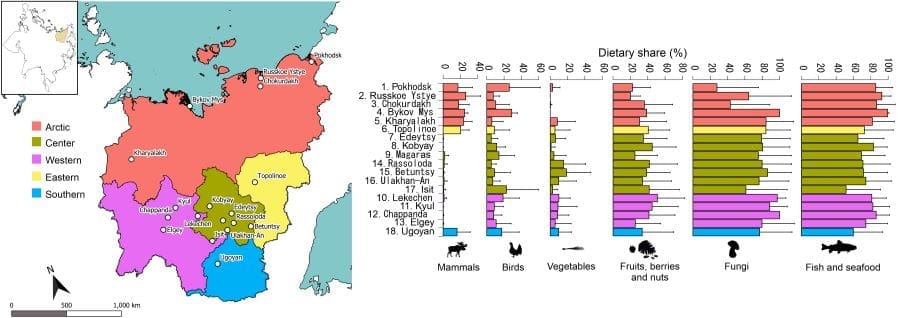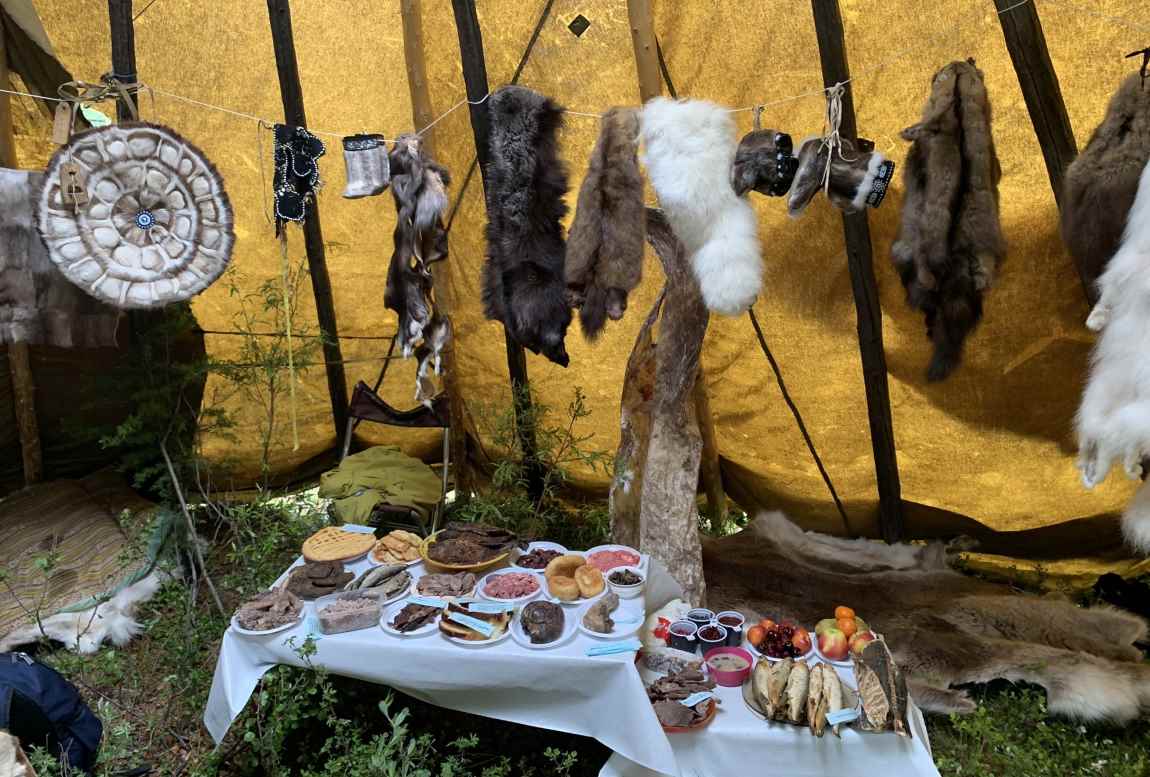Rural Indigenous communities in Russia’s Far East rely on traditional food systems that depend on wild animal, plant, and fungal species, especially in remote and resource-limited regions. However, these vital food sources are increasingly threatened by climate change and land use transformations.
A study published in PNAS Nexus examines 18 Indigenous settlements across the Republic of Sakha, a region acutely sensitive to climate shifts, providing a detailed analysis of current food dependencies and future impacts. By integrating household surveys with species distribution models for 51 key food species, the research uncovers significant regional variations and warns of potential disruptions to traditional livelihoods as environmental changes reshape species availability.

Hokkaido University – The distribution of traditional wild food sources in the Republic of Sakha could change significantly, affecting the diets and incomes of Indigenous rural communities who depend on them.
Climate- and land use change could significantly alter the make-up and availability of wild traditional foods in the vast Russian Far East, a region that is home to many Indigenous Peoples who depend on those native foods.
Native plants, animals and fungi obtained from nature in these regions are vital to the health and livelihood of people in remote and rural areas, but traditional food systems are under increasing threat from climate- and land use change. However, little is known about the actual contribution of wild traditional foods towards supporting rural households or how future changes in the environment may compromise these dependencies.
Now, an international team led by Associate Professor Jorge García Molinos of the Arctic Research Center at Hokkaido University have surveyed rural Indigenous settlements in the Republic of Sakha about their use of wild traditional foods and evaluated the potential impact of future climate and land use change on those food systems.

The survey covered 400 households in 18 rural settlements across Sakha. It collected data on demographics, dietary habits, and income-generating activities, such as hunting, fishing and gathering of traditional wild food species.
Analyzing the data revealed that dependence on wild food sources varied over the region, with significantly lower intake in settlements in the more developed and accessible central and western areas but a comparatively much higher intake in communities of the remote and isolated northern Arctic region. In the Arctic settlements, the dietary focus was on wild fish and mammals, but rural households in the southern and western areas consumed preferentially wild plant-based foods, such as berries and nuts.
There was a similar pattern in terms of economic dependence on wild food sources. Wild foods – mostly mammals – made up around 11 percent of total household income in one northern settlement, but only around 3 percent – mostly from berries – in a central settlement.
The researchers then used species distribution models to project future changes in the availability of 51 wild food species under different climate- and land use change scenarios. This involved mapping projected changes at regional and local scales; the latter considered within a 100-kilometer radius of the study settlements, representing the areas in which those wild foods would likely be harvested.
The modeling predicted a general decrease in the number of species by 2050 in southern areas of the Republic of Sakha and mild increases in the northern areas as species contract and expand their ranges in response to environmental changes. Locally, these broad regional changes mean that the number and type of food species available to individual settlements will likely change in the future.
For example, some species, such as moose, are projected to expand their range into the northernmost Arctic regions, thus likely providing new food and economic opportunities for settlements in that area. On the other hand, some species in central and southern areas, such as blackcurrant, wild onion and lingonberry, are projected to experience a sharp decrease in habitat suitability, likely becoming unavailable to some of the settlements in these regions, particularly under the most extreme emission scenario.
“Although our models project these local losses may be compensated by the establishment of other new species experiencing improvements in habitat conditions, anticipating how such trade-offs in availability of local wild food species will impact these rural communities in the future is an important open question that requires further research,” García Molinos says.
Journal Reference:
Jorge García Molinos, Daichi Yamada, Varvara Parilova, Shokhrukh Khasanov, Viacheslav Gabyshev, Andrey Makarov, Daiju Narita, Innokentiy Okhlopkov, Zhixin Zhang, Stephen C Sakapaji, Tuyara Gavrilyeva, ‘Future climate and land use changes challenge current dependencies on wild food harvesting by rural indigenous communities’, PNAS Nexus 3, 12, pgae523 (2024). DOI: 10.1093/pnasnexus/pgae523
Article Source:
Press Release/Material by Hokkaido University
Featured image: A variety of local traditional foods displayed during a Bakaldyn (celebration) in Kharyalakh, an Evenk settlement of the Arctic region. Credit: Varvara Parilova




